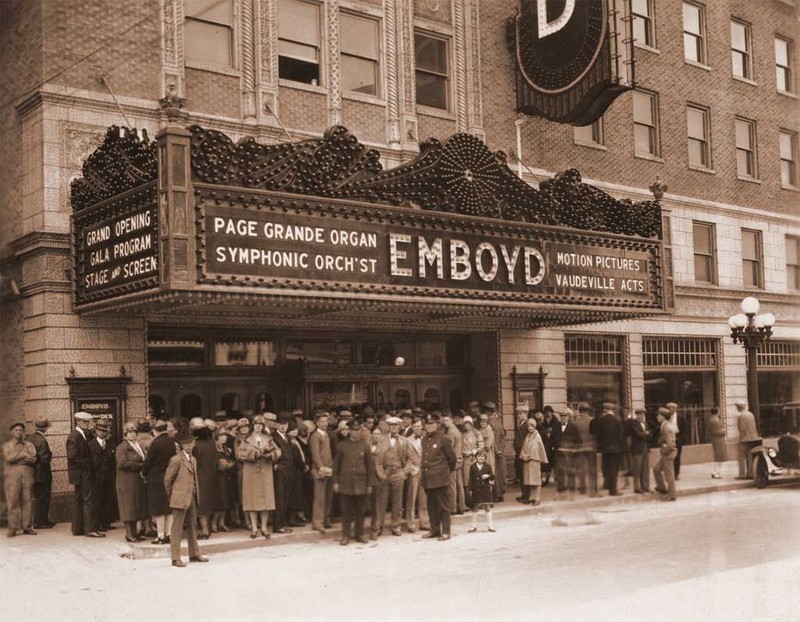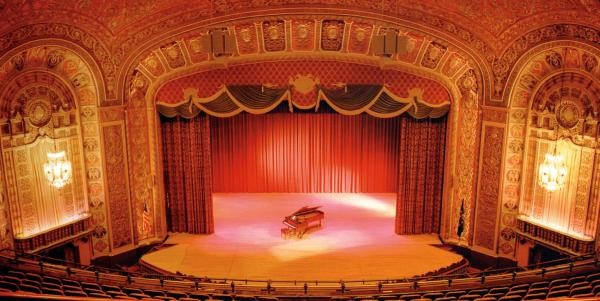The Embassy Theater
Introduction
Text-to-speech Audio
Images
The Emboyd Theater

The Embassy Theater Interior

Backstory and Context
Text-to-speech Audio
What makes the Embassy so significant to theatre history, in addition to its participation in the vaudeville movement, was how it withstood the changes in theatre throughout the decades. When it was founded, critics raved about the theater’s “sumptuous beauty… its atmosphere of luxurious comfort… [and its] inaugural entertainment program” (DeVoe). The Embassy easily adapted from film and vaudeville performances to feature the integrated musical, which audiences eagerly flocked to see. The integrated musical adapted from vaudeville performances and similar shows to create a fluid narrative throughout the show. The songs in this new style of theatre are “integrated” into the story and are essential to advancing the plot or character development. Among the most popular playwrights to bring notoriety to this style of performance were Richard Rodgers and Oscar Hammerstein. Their shows became characteristic of the “integrated” or “book” musical which flourished during the golden age of theatre in the 1940s. The Embassy Theater achieved significance in the realm of theatre history as it adapted its performances to meet popular trends of the time. In the 1940s, the theater shifted from showing variety and vaudeville performances to producing a greater number of integrated musicals. In the 1940s, it featured popular book musicals such as Rodgers and Hammerstein’s Oklahoma!. Tragedy struct in 1972, when the beloved theater was faced with demolition lest a significant amount of funds could be raised. The theater had been struggling for the past two decades, as all theaters across America were with the rise in popularity of in-home television. Luckily, a man named Robert Goldstine led a group called the Embassy Theatre Foundation in raising the funds necessary to reopen the theater. After years of hard work and labor, the theater reopened in 1975 for a benefit concert played by organist Buddy Nolan. The theater slowly rose back to prominence up to its major renovation and expansion in 1995. Many were thrilled with the advancements made during the renovation, gushing over the, "new mechanical systems, new structure, [and] new finishes" but noting, "at the same time... it looks like it [did] in 1928 after the big renovations, we brought it back to its historic nature" (Glaros). Today, the theater is still thriving and producing large scale mega musicals to appeal to the present day theatergoers.
Cite This Entry
Katie Malish. "The Embassy Theater." Clio: Your Guide to History. April 28, 2020. Accessed April 27, 2025. https://theclio.com/tour/829/9
Sources
Mueller, John. "Fred Astaire and the Integrated Musical." Cinema Journal 24, no. 1 (1984): 28-40. Accessed April 14, 2020. doi:10.2307/1225307.
DeVoe, Kale. “Archive.” The Embassy Theater, (2020). Accessed April 17, 2020. http://fwembassytheatre.org/about-us/
Glaros, Gina. "Embassy Theatre completes $10 million in renovations." Wane News Coverage, (2014). Accessed April 28, 2020. https://neindiana.com/news/embassy-theatre-completes-10-million-in-renovations

